The Martyrs Window
by B. van Cleve
The Martyrs window is situated on the west side of the church. It is a Kempe window and was manufactured in 1901.
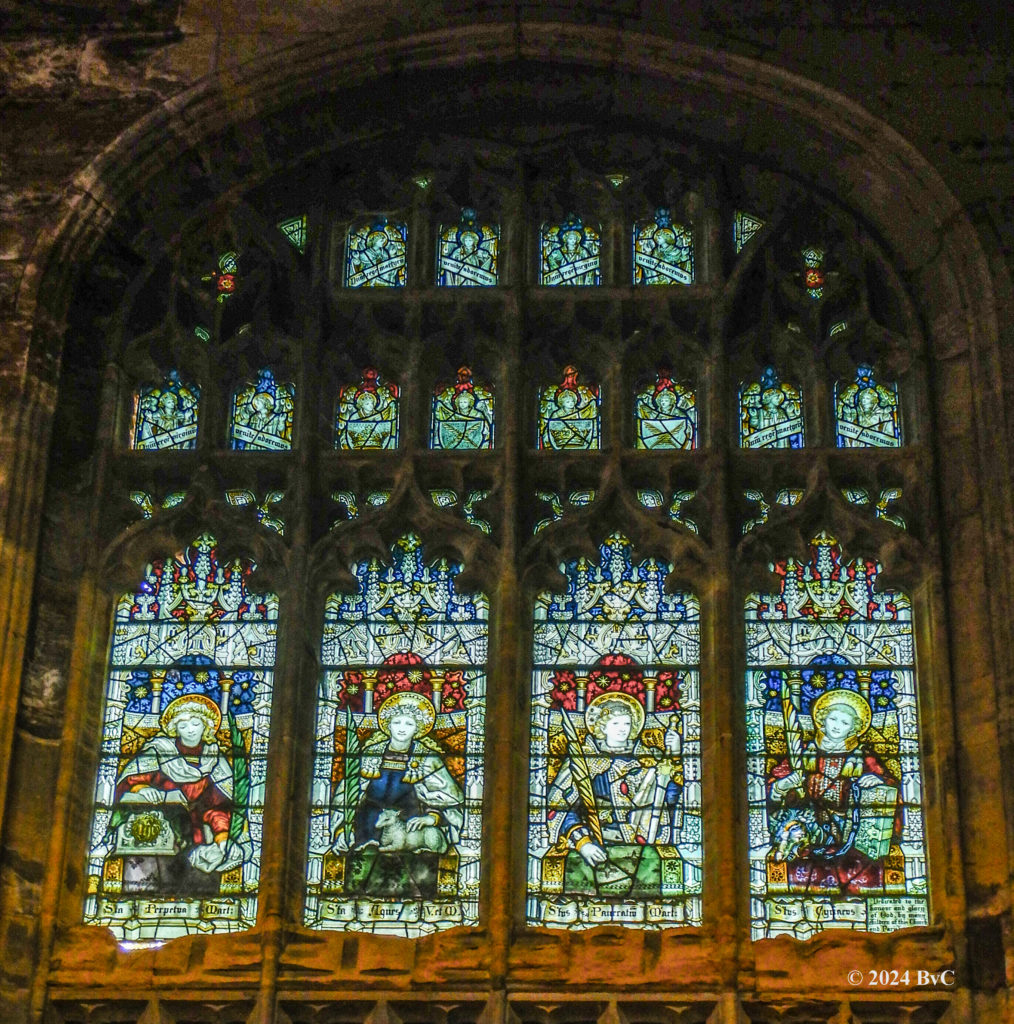
This window is situated over the passageway between church and church side hall. A small crowd of angels – twelve to be exact – presides over four figures who are looking quite young (and very similar to each other, if viewed from a short distance).
The angels are depicted either with banners with Latin writing or with shields. These shields show either a crown or two crossed palm leaves. The palm leaves are an indication that the figures underneath are martyrs, who are awaiting their crown when they go to heaven.
The Angelic Realm

The Latin writing is very difficult to read. Some words are vigorously abbreviated. Nevertheless an attempt was made to at least try and decipher the text and translate it.
The result of this attempt reads as follows (in un-abbreviated form):
Dominum regem martyrum venite adoremus
The Lord, king of martyrs, come, let us adore (him)Dominum regem virginum venite adoremus
The Lord, king of virgins, come, let us adore (him)
This text is mirrored in the second row of angels, so that the text with the virgins comes first and the text with the martyrs comes second. Additionally, the four shield-bearing angels with crown or crossed palm leaves are depicted between the four banner-carrying angels.

The four figures below the group of angels have their names written beneath their depiction, which makes it easy to find out who they are representing.
Martyrs
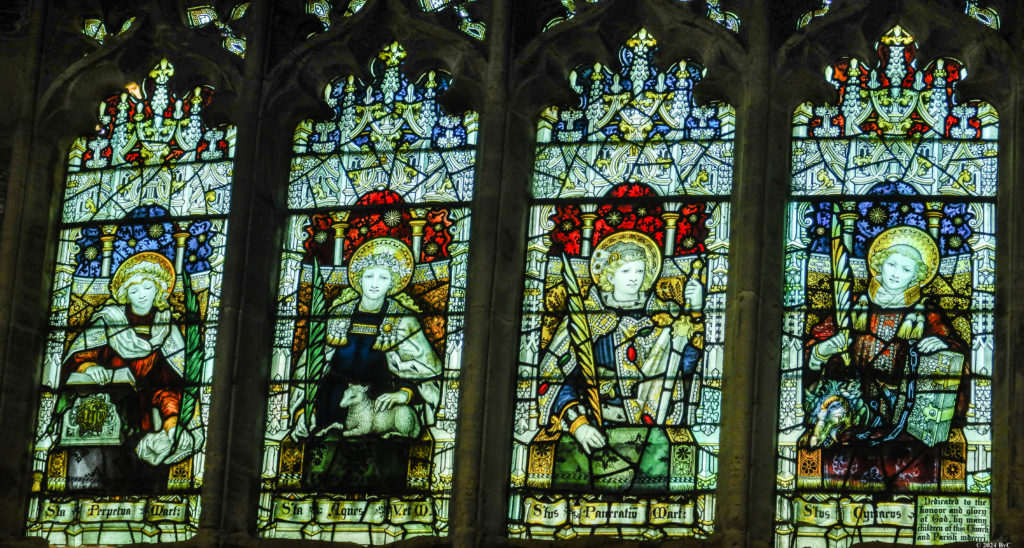
The first figure on the left represents Perpetua, depicted with palm leaf (as martyr) and a book on a reading pulpit with the letters ‘IHC’. ‘IHC’ or ‘IHS’ are commonly used as Christogram in the Latin speaking Christianity of medieval Western Europe and stands for the name ‘Jesus’ (ΙΗΣΟΥΣ). Perpetua was a martyr and is described as a well educated noble-woman of Carthage who lived from around 182 to around 203.
The next figure represents Agnes, depicted with palm leaf (as martyr) and lamb (as sign of virginity). She lived in Rome from around 291 to around 304.
The third figure represents Pancras, depicted with a palm leaf (as martyr) and a sword. He was born in Phrygia and moved to Rome. He lived from around 289 to around 304.
The fourth figure represents Cyriacus, who is depicted with a palm leaf (as martyr), a book and a chained monstrosity. It is said of him that he freed people from demons. He was born in the 3rd century and died in Rome around 303.
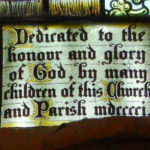
The dedicational text for this stained glass window can be found in the lower right corner. It reads:
Dedicated to the
honour and glory
of God, by many
children of this Church
and Parish mdcccci.
In the image above, the year of the dedication reads as mdcccci. This is an irregular way to write 1901 in Latin, the usual way being mcmi.
All images © B. van Cleve
← previous window – next window →
Floor plan of stained glass windows in St. Peter’s church Brighton
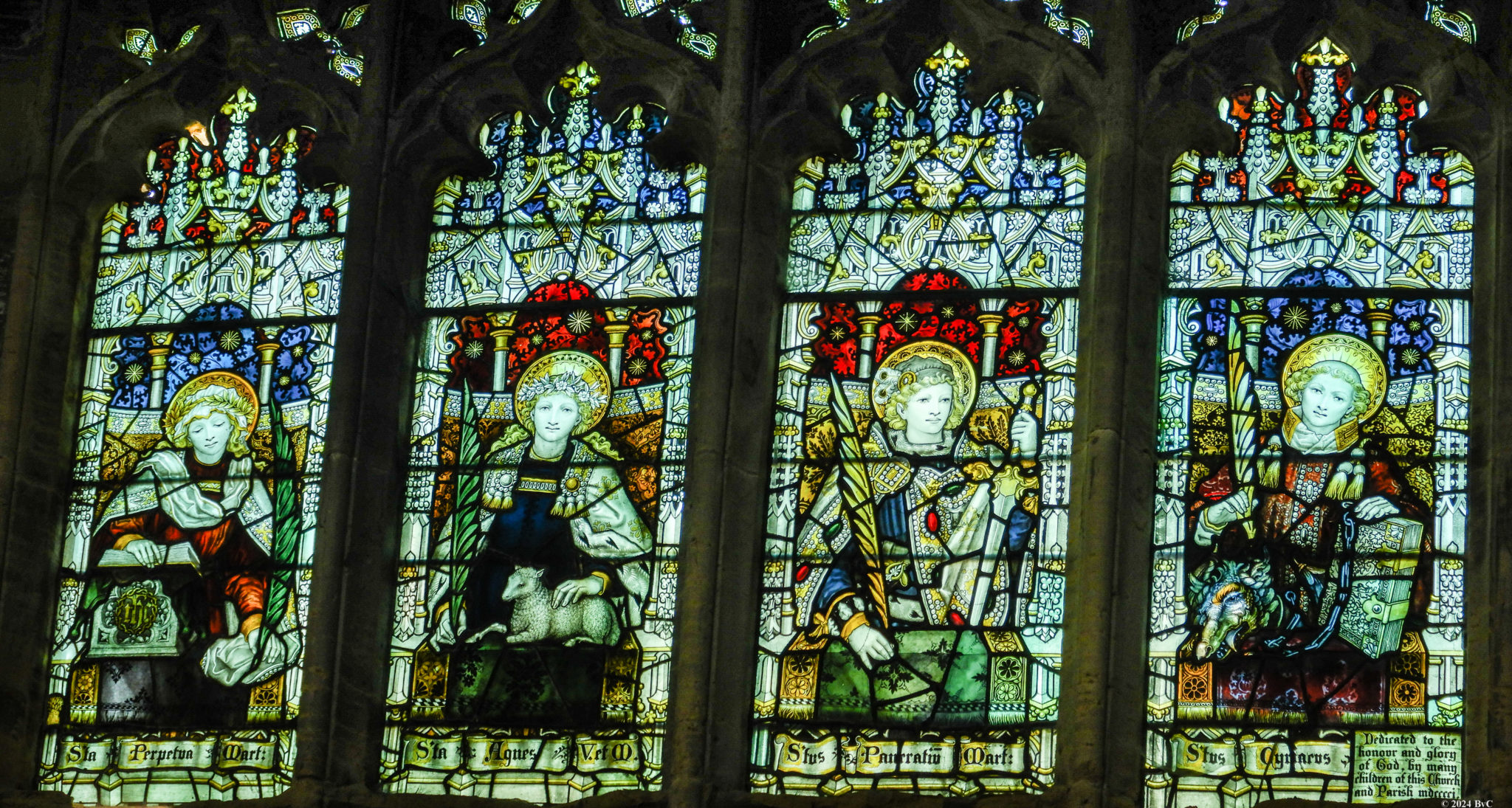
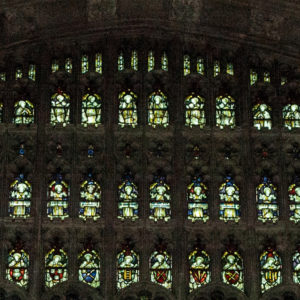
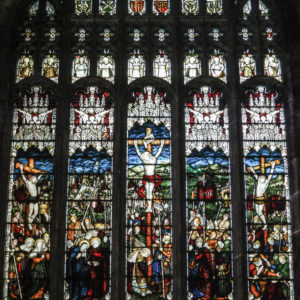
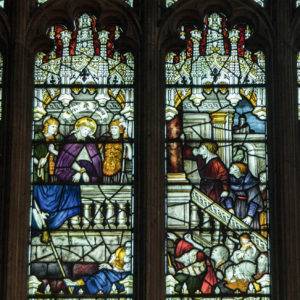
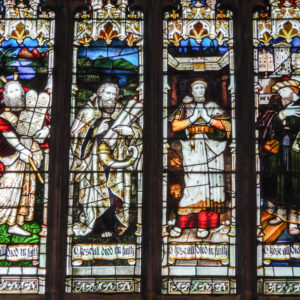
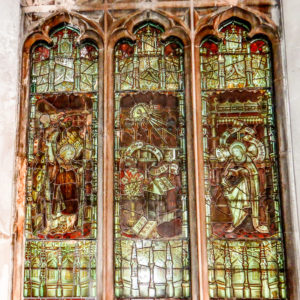
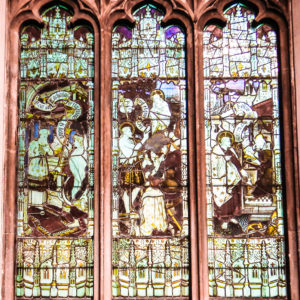
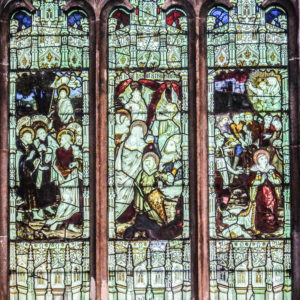
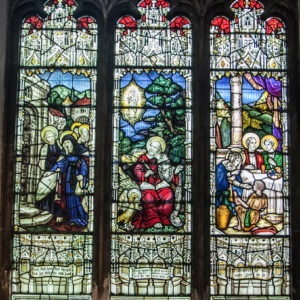
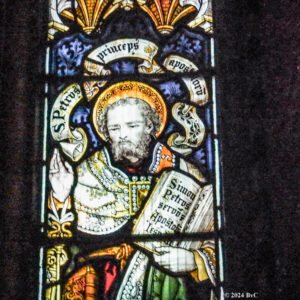
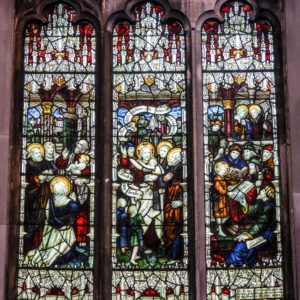
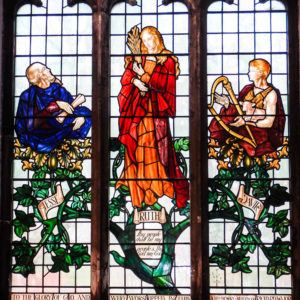
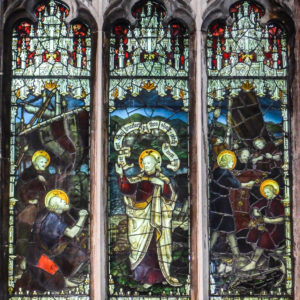
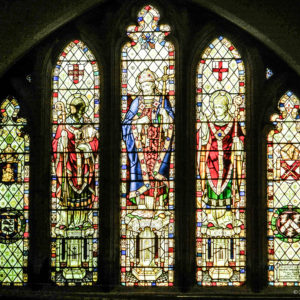
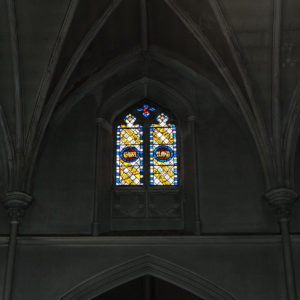
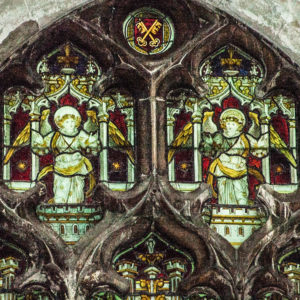
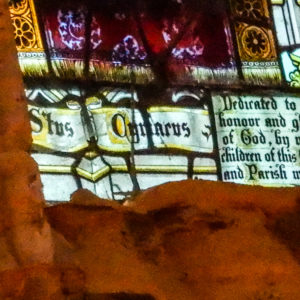
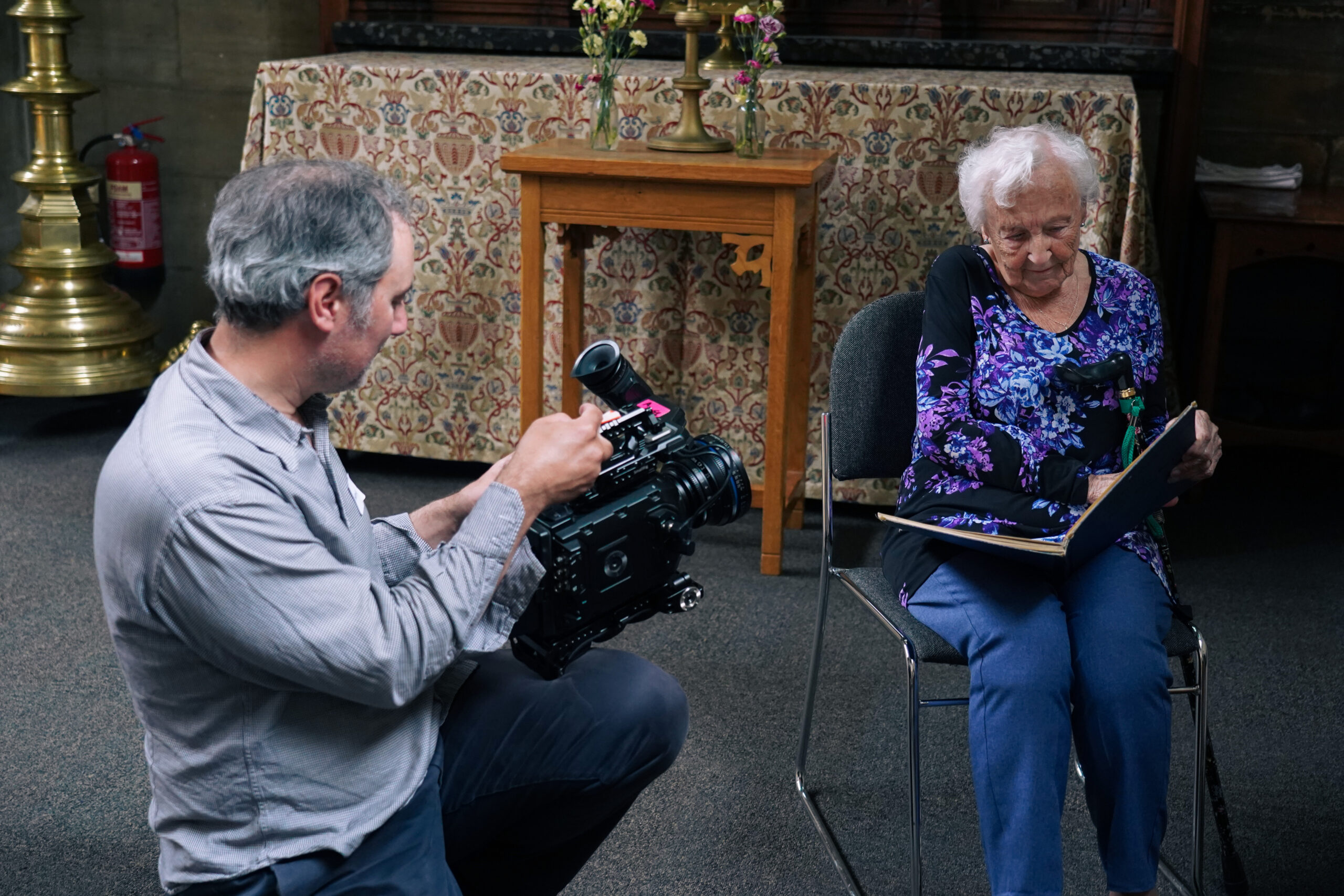



‘This project is kindly funded by Historic England as part of the Everyday Heritage - Working Class Histories. We are grateful to them for this funding.’